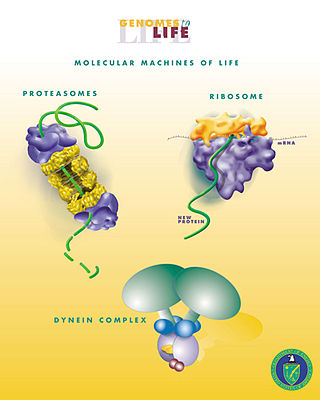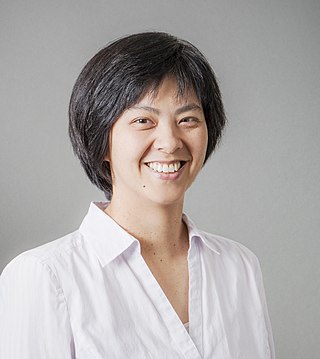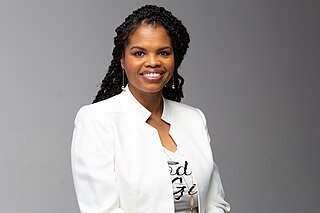
The USC Viterbi School of Engineering is the engineering school of the University of Southern California. It was renamed following a $52 million donation by Andrew J. Viterbi, co-founder of Qualcomm.
Neural engineering is a discipline within biomedical engineering that uses engineering techniques to understand, repair, replace, or enhance neural systems. Neural engineers are uniquely qualified to solve design problems at the interface of living neural tissue and non-living constructs.

Biological engineering or bioengineering is the application of principles of biology and the tools of engineering to create usable, tangible, economically viable products. Biological engineering employs knowledge and expertise from a number of pure and applied sciences, such as mass and heat transfer, kinetics, biocatalysts, biomechanics, bioinformatics, separation and purification processes, bioreactor design, surface science, fluid mechanics, thermodynamics, and polymer science. It is used in the design of medical devices, diagnostic equipment, biocompatible materials, renewable energy, ecological engineering, agricultural engineering, process engineering and catalysis, and other areas that improve the living standards of societies.

Mehmet Toner is a Turkish biomedical engineer. He is currently the Helen Andrus Benedict Professor of Surgery at Massachusetts General Hospital (MGH) and Harvard Medical School, with a joint appointment as professor at the Harvard-MIT Division of Health Sciences and Technology (HST).
Barry Andrew Trimmer is an American scientist, and the Henry Bromfield Pearson Professor of Natural Sciences at Tufts University. In addition to his primary appointment in the Department of Biology he holds secondary appointments in Biomedical Engineering and in Neuroscience at the Tufts Graduate School of Biomedical Science. His research primarily focuses on neurobiology, biomechanics / neuromechanics and soft-bodied locomotion.
Lori Ann Setton is an American biomechanical engineer noted for her research on mechanics and mechanobiology of the intervertebral disc, articular cartilage mechanics, drug delivery, and pathomechanisms of osteoarthritis. She is currently the department chair as well as the Lucy and Stanley Lopata Distinguished Professor of Biomedical Engineering at McKelvey School of Engineering at Washington University in St. Louis.

Shrikanth Narayanan is an Indian-American Professor at the University of Southern California. He is an interdisciplinary engineer–scientist with a focus on human-centered signal processing and machine intelligence with speech and spoken language processing at its core. A prolific award-winning researcher, educator, and inventor, with hundreds of publications and a number of acclaimed patents to his credit, he has pioneered several research areas including in computational speech science, speech and human language technologies, audio, music and multimedia engineering, human sensing and imaging technologies, emotions research and affective computing, behavioral signal processing, and computational media intelligence. His technical contributions cover a range of applications including in defense, security, health, education, media, and the arts. His contributions continue to impact numerous domains including in human health, national defense/intelligence, and the media arts including in using technologies that facilitate awareness and support of diversity and inclusion. His award-winning patents have contributed to the proliferation of speech technologies on the cloud and on mobile devices and in enabling novel emotion-aware artificial intelligence technologies.

Tony Jun Huang is the William Bevan Distinguished Professor of Mechanical Engineering and Materials Science at Duke University, United States.

Ellis Meng is the Shelly and Ofer Nemirovsky Chair of Convergent Biosciences and Professor of Biomedical Engineering and Electrical and Computer Engineering in the Viterbi School of Engineering at the University of Southern California, where she also serves as the Vice Dean of Technology Innovation and Entrepreneurship. Meng is highly decorated in the development of novel micro- and nanotechnologies for biomedical applications. In 2009, Meng was named on MIT Technology Review's "Innovators Under 35" List for her work on micropumps that deliver drugs preventing blindness, and she was listed on the 40 Under 40 List of the Medical Device and Diagnostic Industry (MDDI) in 2012.

Andrea Martin Armani is Sr Director of Engineering and Physical Sciences at the Ellison Institute of Technology, the Ray Irani Chair in Engineering and Materials Science, and a professor of chemical engineering and materials science at the USC Viterbi School of Engineering. She was awarded the 2010 Presidential Early Career Award for Scientists and Engineers from Barack Obama and is a World Economic Forum Young Global Leader.

Christopher J. Hernandez is an American engineer and scientist who currently serves as professor at the University of California, San Francisco in the departments of Orthopaedic Surgery and Bioengineering and Therapeutic Sciences.
Beth Ann Winkelstein is the Deputy Provost and the Eduardo D. Glandt President’s Distinguished Professor at the University of Pennsylvania. Winkelstein has established an active research program that is recognized for elucidating the mechanisms of subfailure cervical spine injuries and the cellular events surrounding the etiology of chronic pain. She is further recognized for longstanding contributions to the discipline of biomechanics and for mentoring many students that have followed into research active careers. Her research focuses on orthopaedic and musculoskeletal disorders, including developing innovative new pharmacological treatments and biomedical devices; the mechanisms of bodily injury, especially injuries from sports, automobile accidents, and/or degenerative diseases; and new treatments for spine and other joint injuries.
Audrey K. Ellerbee Bowden is an American engineer and Dorothy J. Wingfield Phillips Chancellor's Faculty Fellow at Vanderbilt University, as well as an Associate Professor of Biomedical Engineering and Electrical Engineering. She is a Fellow of Optica, the American Institute for Medical and Biological Engineering and the International Society for Optics and Photonics (SPIE).
Jennifer Kehlet Barton is an American biomedical engineer who is Director of the BIO5 Institute at the University of Arizona. Barton develops optical techniques for the detection and treatment of cancer.

Lakiesha Williams is a biomedical engineer and an Associate Professor at the University of Florida. Williams specializes in traumatic brain injury and biomechanics. Specifically, her work involves the modelling and mechanics of soft tissue, and how outside influences affect their structure. Much of her work on repetitive brain trauma involves utilizing preclinical models to study the long term neurodegenerative effects of damages. She grew up in New Orleans, with her dad working as a carpenter. Williams went on to become a first generation college student, college graduate, and now, an Associate Professor.
Beth L. Pruitt is an American engineer. Upon completing her master's degree in manufacturing systems engineering from Stanford University, Pruitt served as an officer in the United States Navy. She is a full professor of mechanical engineering, biological engineering, and biomolecular science & engineering at the University of California, Santa Barbara. She is a fellow of both ASME and AIMBE.
Melissa F. Grunlan is an American scientist and academic. She is Professor and Holder of the Charles H. and Bettye Barclay Professorship in the Department of Biomedical Engineering at Texas A&M University. She holds courtesy appointments in the Departments of Chemistry and Materials Science & Engineering. Her research focuses on the development of polymeric biomaterials for regenerative engineering and medical devices.
Dawn M. Elliott is an American biomedical engineer whose research concerns the biomechanics of connective tissue including the tendons, menisci, and intervertebral discs. She is Blue and Gold Distinguished Professor of Biomedical Engineering at the University of Delaware, adjunct professor of orthopaedic surgery at the Perelman School of Medicine at the University of Pennsylvania, and the former president of the Biomedical Engineering Society.
Eva Adnan Kanso is a Lebanese-American mechanical engineer who studies locomotion in fluids: the behavior of fish, the ways that cilia can move liquid and move small organisms through liquid, the ways that the motion of water can be used to sense moving objects, and the replication of similar behavior by robots and in computer animation. She is a professor and Zohrab A. Kaprielian Fellow in the Department of Aerospace and Mechanical Engineering at the University of Southern California, and a program director at the National Science Foundation.
Gianluca Lazzi is an Italian electrical engineer.









